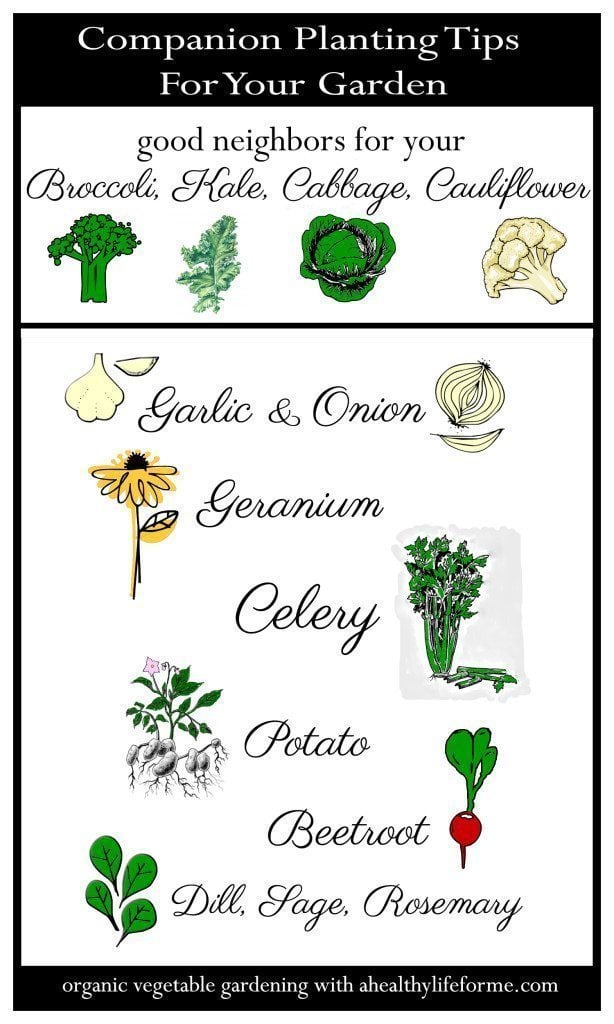Learning the Companion Planting Tips for Cruciferous Vegetables; Broccoli, Kale, Cabbage, Cauliflower is a great way to becoming an organic vegetable gardener. Making sure that the vegetables you grow are healthy and pesticide-free.
Subscribe to my blog | Follow me on Bloglovin | Instagram | Pinterest | Twitter | Facebook
Companion planting in organic gardening is the planting of different crops in proximity forpest control, pollination, and providing habitat for beneficial creatures without having to use pesticides.
Several insect pests attack cruciferous crops, especially caterpillar pests. Broccoli and other cruciferous vegetables belonging to the cabbage family do well when companion planted with garlic, onion, geranium, celery, potatoes, beets as well as dill, sage and rosemary.
Even with companion planting I choose to use row covers to cover these vegetables. Here in Cincinnati the cabbageworm can infest a head of broccoli in a matter of days. Also, make sure to leave plenty of space in between the varieties of cruciferous vegetables in the garden. The more room in between varieties the better odds you will have at controlling pests.
Organic gardeners like myself know that a varying mix of plants makes for a healthy and beautiful garden. We also believe that certain plant combinations have the ability to help each other grow. Using companion planting and crop rotation in your garden not only will help keep pests at a minimum, naturally, but will help the overall health of your soil.
Scientific study of companion planting has confirmed that some combinations have real benefits unique to those combinations. Many plants have a natural substance in their roots, leaves, flowers, etc that repel and/or attract insects. Years of experience has demonstrated to me how to grow certain plants along side one another for their mutual benefit.
How does companion planting work?
- Companions help each other grow—Tall plants, for example, provide shade for sun-sensitive shorter plants. Example: Tomatoes shading the Nastirium
- Companions use garden space efficiently—Vining plants cover the ground, upright plants grow up. Two plants in one patch. Example: Sweet peas growing up a trellis, with radishes growing at the base.
- Companions prevent pest problems—Plants like onions repel some pests. Other plants can lure pests away from more desirable plants.
The graphic below is perfect to save to your Pinterest Gardening board to use as a reminder of who is a good neighbor for your Broccoli, Kale, Cabbage and Cauliflower.
Don’t forget to check out my companion planting tips for Peppers and Tomatoes.













Some great ideas for me here! I’ve been thinking about trying this for long time and finally decided to start few weeks ago. Your advises will be of a great help for me. Thank you for sharing!
Great info! I never really thought about companion plants so this is very helpful.